Mastery Lessons
We believe in a holistic and engaging approach to anesthesia education. Our mastery lessons are segmented into three dynamic phases. First, learners are introduced to each topic through a rich blend of videos, photos, quiz questions, and interactive objectives. This multifaceted approach allows for a comprehensive understanding of essential concepts and their application to anesthesia.
Next, mastery lessons guide learners through interactive scenarios, where they can actively apply and practice the newly acquired insights. This hands-on experience empowers them to understand the real-world implications of theoretical knowledge, bridging the gap between learning and practical application.
Finally, the mastery lessons culminate with a challenging scenario in the operating room. Here, students must utilize their knowledge and skills to resolve a real-world issue. This immersive methodology ensures that learners not only grasp the fundamental theories but also excel in their practical application, fostering confidence and competence in the field of anesthesia.
Mastery Lesson Categories
Browse our library of lesson content to see what each category covers.

CO2 Absorber
6 lessons
- Identify the purpose of a CO2 absorber
- Identify byproducts of CO2 absorption
- Recognize an exhausted CO2 absorber
- Recognize the signs of CO2 rebreathing in a patient
- Change a CO2 absorber
- Deal with an exhausted CO2 absorber when no replacement is handy
- Independently recognize and address a situation in which the CO2 absorber is exhausted.
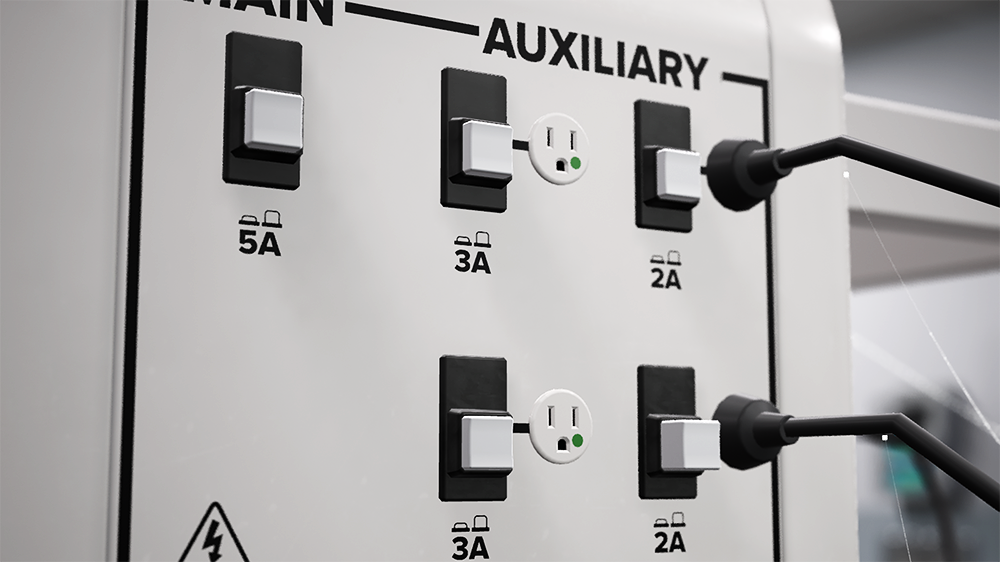
Electrical System
8 lessons
- Identify and operate the anesthesia machine master switch
- Identify the auxiliary outlets on the anesthesia machine and equipment that can and cannot be plugged into them
- Recognize the significance of the battery backup alarm
- Identify and operate the main and auxiliary breakers on the anesthesia machine
- Evaluate for the proper functioning of the line isolation monitor.
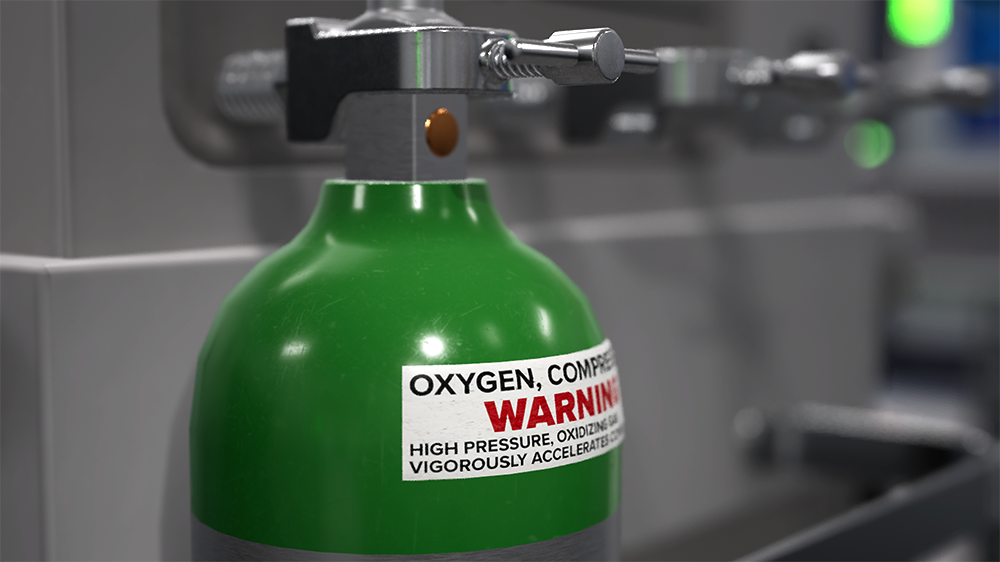
Cylinder Oxygen Supply
7 lessons
- Identify the backup and auxiliary oxygen cylinders
- Activate the backup and auxiliary oxygen cylinders
- Correctly identify the purpose of the pin index system
- Correctly identify the purpose of the hanger yoke
- Correctly estimate the volume remaining in an oxygen cylinder
- Identify when an oxygen tank needs to be replaced.
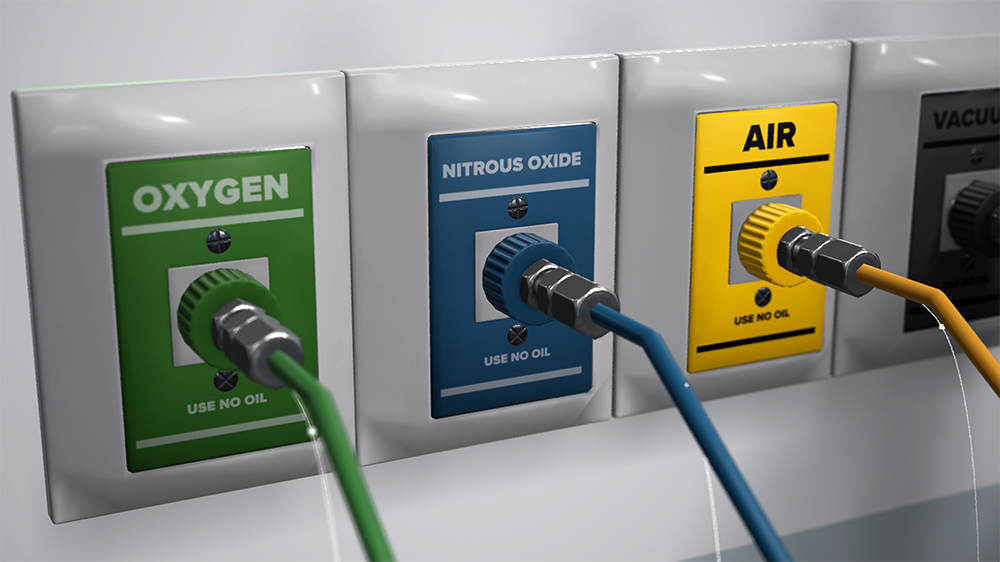
Pipeline Gas Supply
7 lessons
- Connect and disconnect high pressure gas lines from their wall connections
- Demonstrate understanding of the diameter index safety system and quick connect fittings
- Correctly assess pipeline gauge pressures
- Recognize and address the loss of the pipeline oxygen supply.
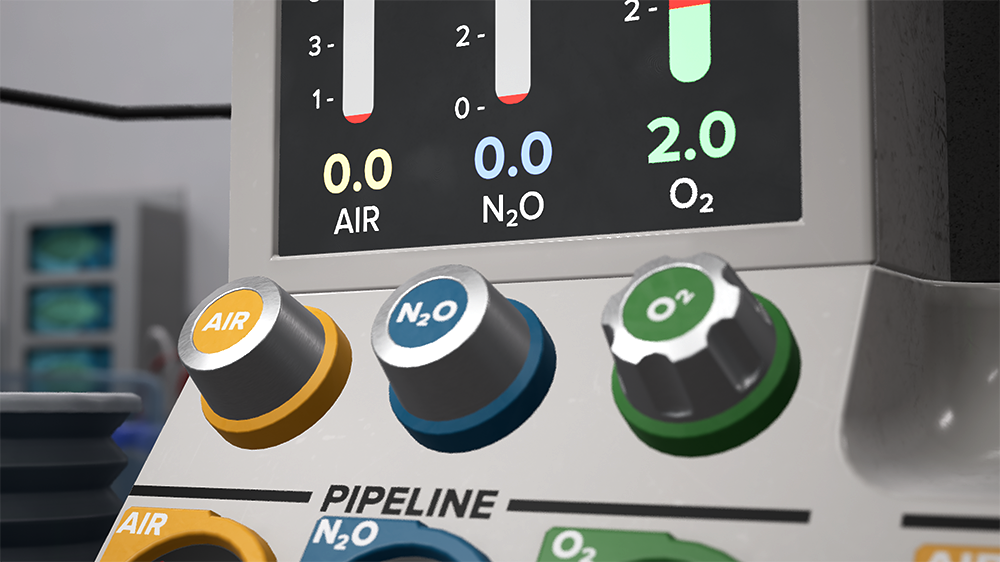
Gas Delivery System
9 lessons
- Identify and operate the air, nitrous oxide, and oxygen flowmeters.
- Demonstrate an understanding of the nitrous oxide proportioning system.
- Demonstrate the significance of the fail-safe valve.
- Identify and engage the common gas outlet and auxiliary common gas outlet.
- Demonstrate safe use of the oxygen flush valve.
- Adjust the flowmeters to set target FiO2 values.
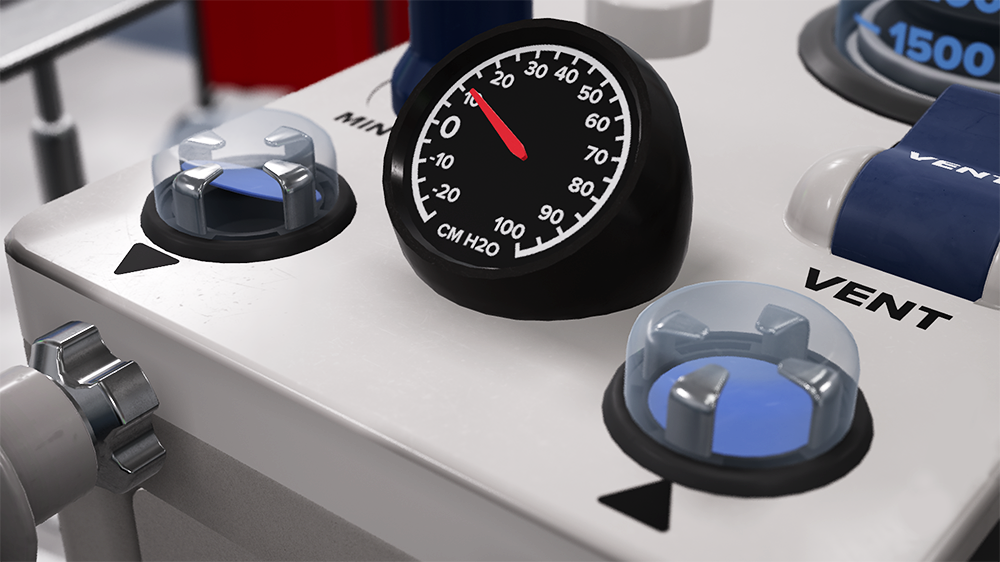
Circle System
8 lessons
- Correctly identify the purpose of the circle system and how it works.
- Identify the function of its individual components including the circuit limbs, inspiratory and expiratory valves, APL valve, y-piece, and breathing bag.
- Independently resolve an anesthesia circuit disconnection.
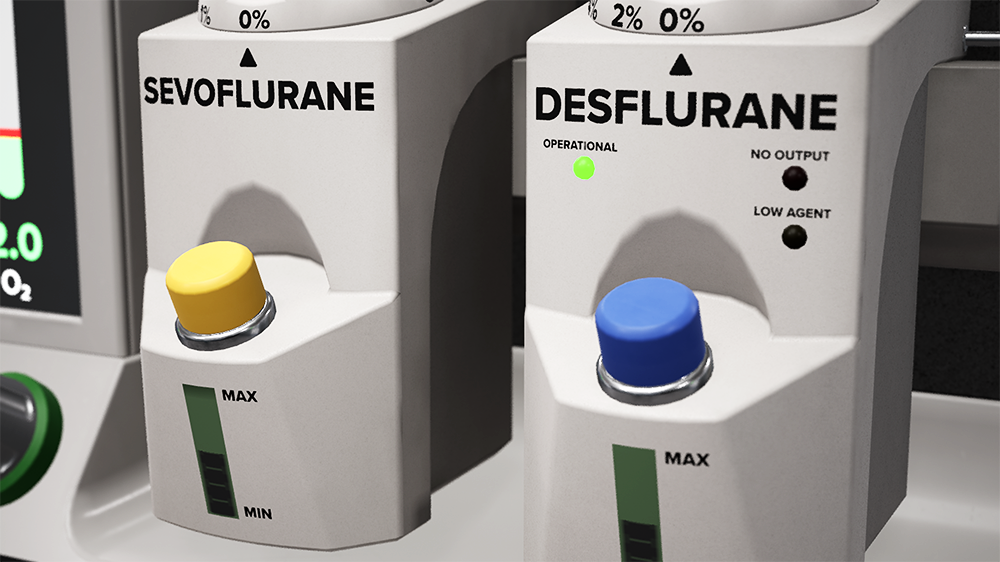
Vaporizers
7 lessons
- Demonstrate an understanding of how variable bypass vaporizers work.
- Demonstrate an understanding of the difference between the sevoflurane vaporizer and the desflurane vaporizers.
- Demonstrate how the selector lock mechanism works.
- Demonstrate the significance of the filler cap and how to ensure it is secure.
- Demonstrate how to refill a vaporizer.
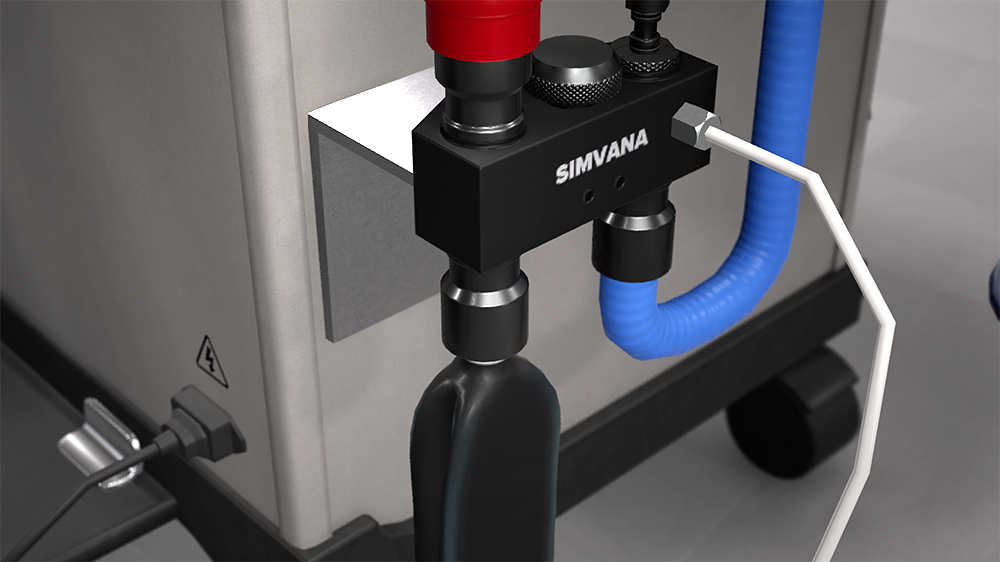
Scavenging System
4 lessons
- Demonstrate an understanding of the purpose of and different types of scavenging systems.
- Demonstrate how to evaluate and adjust the scavenging system.
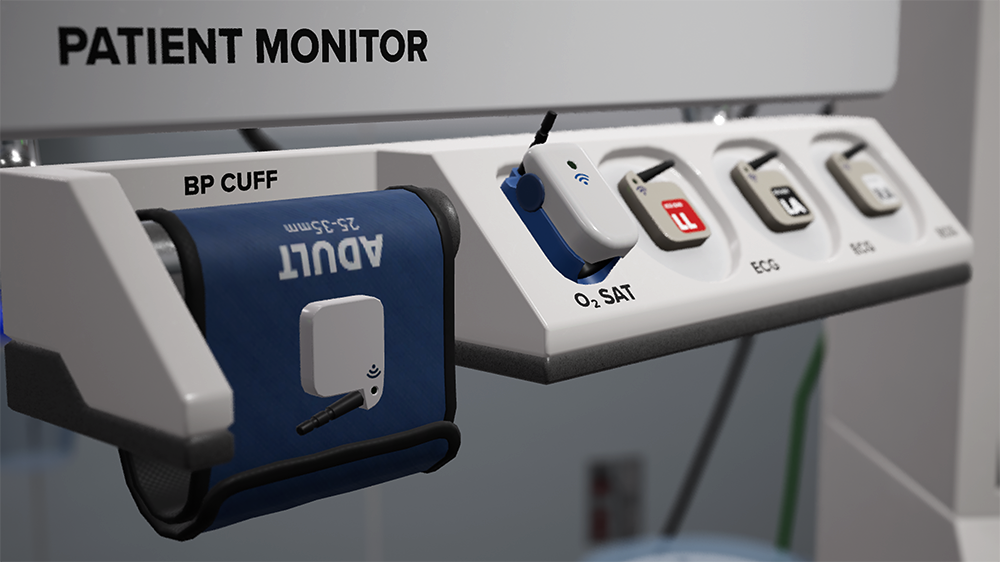
Monitors & Resuscitation Equipment Check
4 lessons
- Demonstrate verification of appropriate patient monitoring equipment.
- Demonstrate verification of required resuscitation equipment.
- Demonstrate verification of adequate suction.
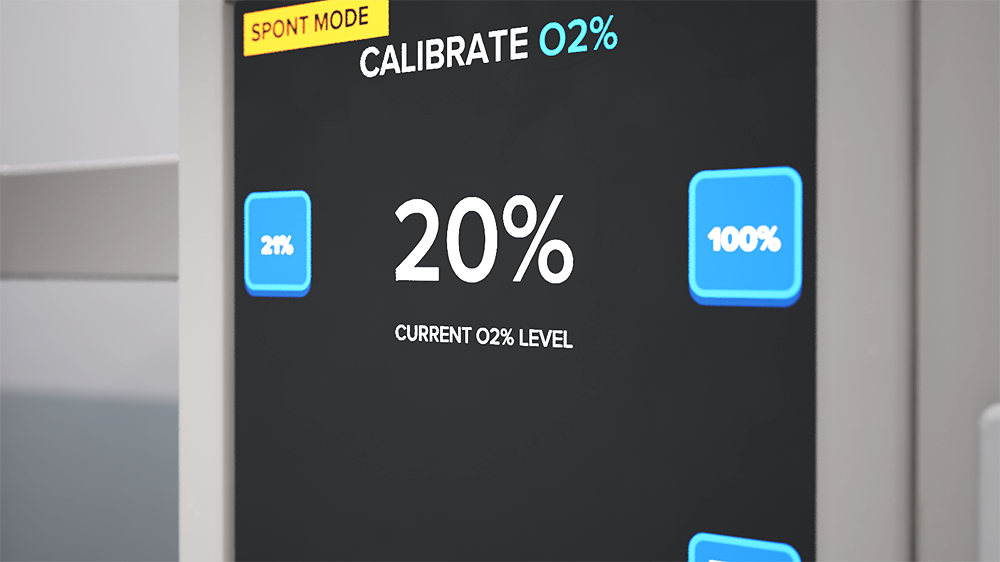
Oxygen Sensor Calibration
4 lessons
- Identify the significance of oxygen sensor calibration.
- Demonstrate how to calibrate the oxygen sensor to room air.
- Demonstrate how to calibrate the oxygen sensor to 100% oxygen.
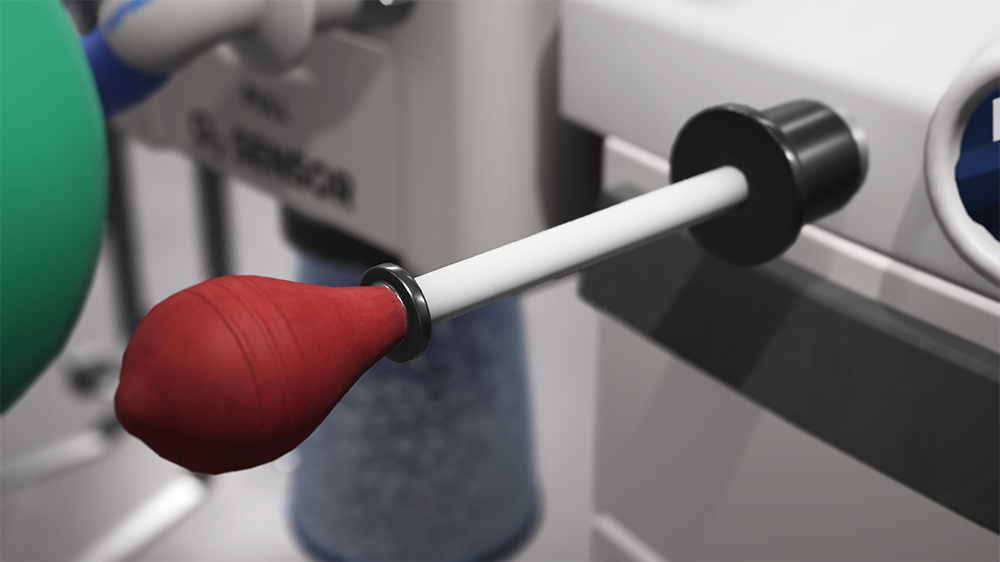
Low Pressure Leak Test
4 lessons
- Demonstrate an understanding of the significance of the low-pressure leak test.
- Identify and operate the components used to perform the low-pressure leak test.
- Demonstrate the proper performance of the low-pressure leak test.
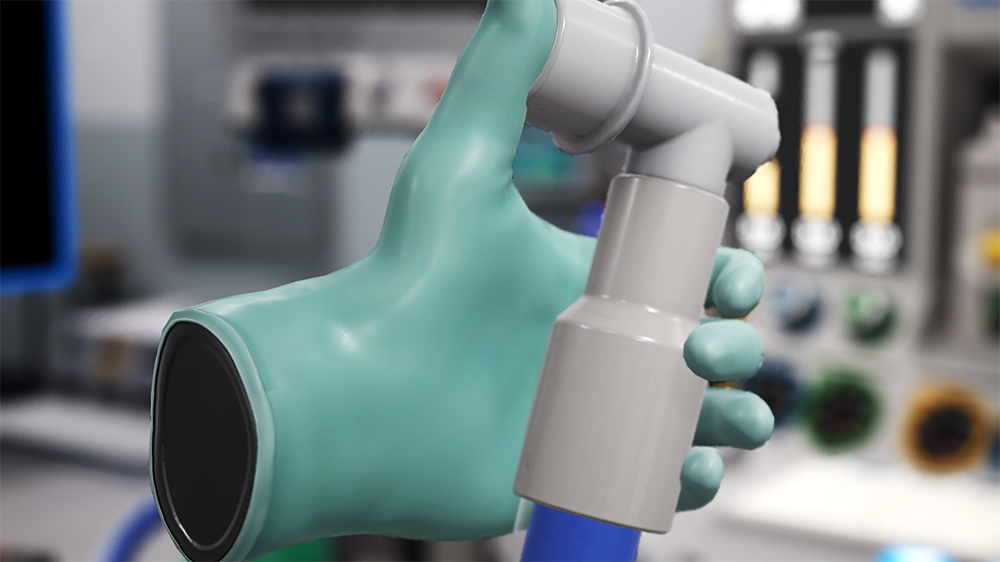
Positive Pressure Check
3 lessons
- Demonstrate an understanding of the significance of the positive pressure check.
- Demonstrate how to properly check for positive pressure.

Ventilation System & Valve Check
2 lessons
- Demonstrate an understanding of the significance of verifying accurate function of the mechanical ventilation system.
- Demonstrate how to perform an evaluation of the mechanical ventilation system.
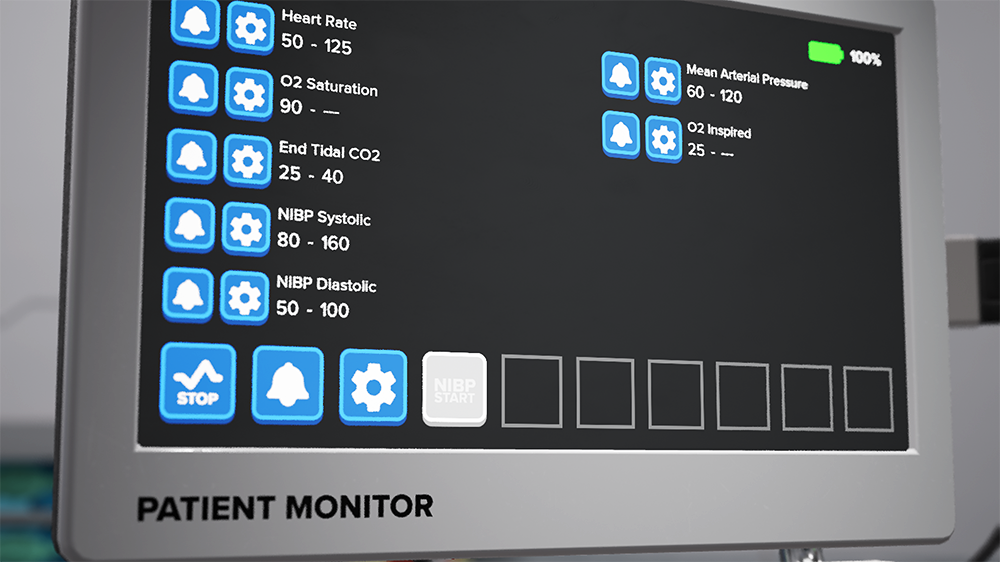
Setting Alarm Limits
3 lessons
- Correctly identify the importance of setting the alarms specifically for each patient.
- Access and modify the SIMVANA patient alarms.

Mean Alveolar Concentration
4 lessons
- Demonstrate an understanding of MAC
- Correctly set the sevoflurane and desflurane vaporizers to MAC and MAC multiple values.
- Demonstrate an understanding of factors affecting MAC.
- Adjust an anesthetic in accordance with a patient’s pre-existing conditions.
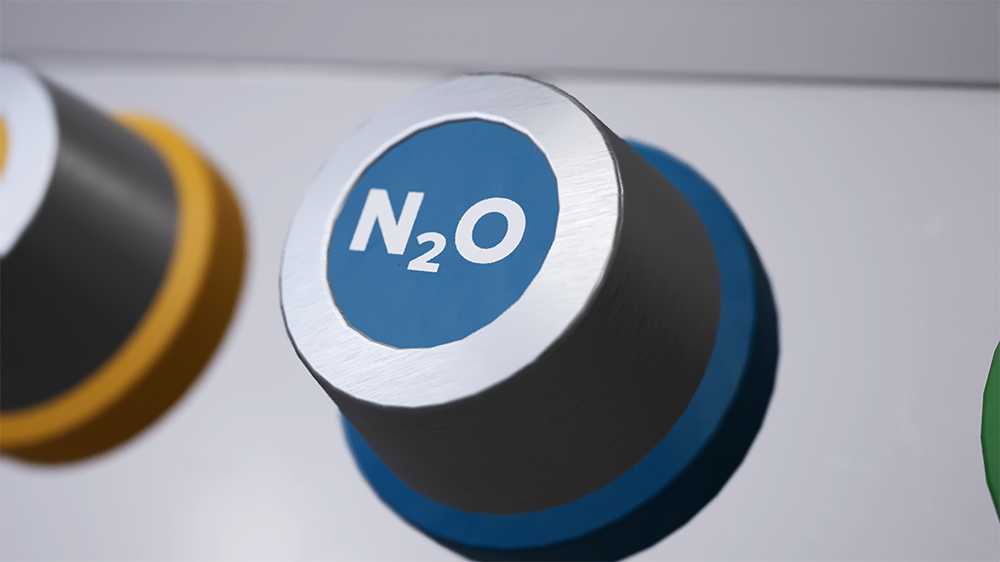
Nitrous Oxide
6 lessons
- Identify the chemical characteristics of nitrous oxide.
- Identify indications and contraindications to its use.
- Demonstrate an understanding of diffusion hypoxia and how to prevent it.
- Correctly identify the cardiac, renal, and cerebrovascular effects of nitrous oxide administration.
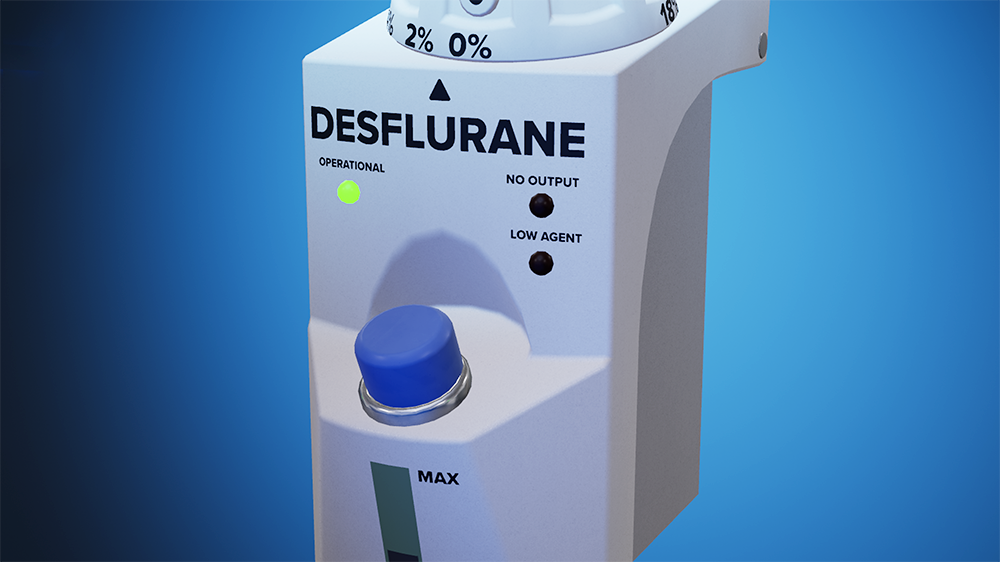
Desflurane
7 lessons
- Identify the chemical characteristics of desflurane.
- Identify the special characteristics of the desflurane vaporizer.
- Administer desflurane to a patient.
- Correctly identify the cardiac, airway, cerebrovascular, and neuromuscular effects of desflurane administration.
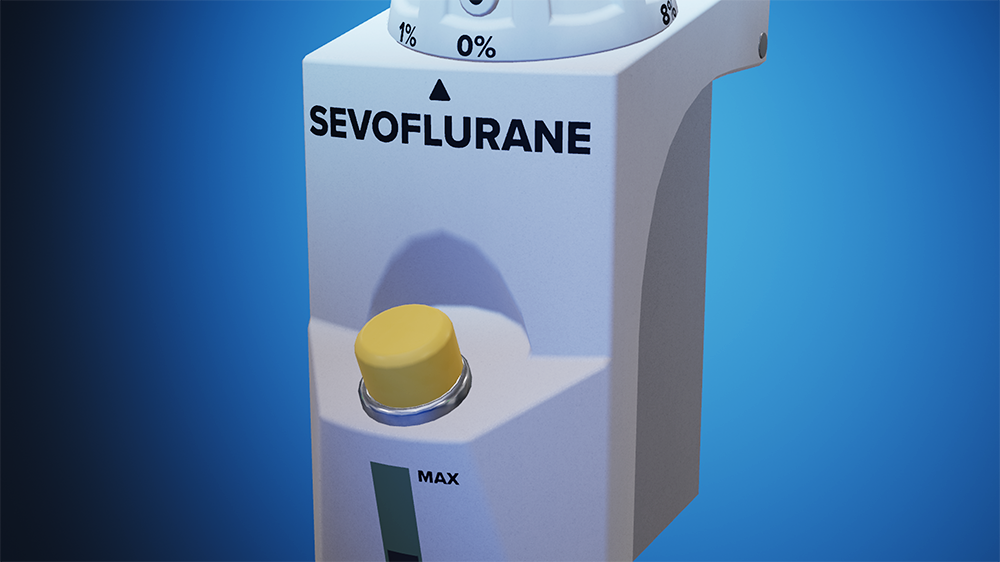
Sevoflurane
8 lessons
- Identify the chemical characteristics of sevoflurane.
- Identify the special characteristics of the sevoflurane vaporizer.
- Administer sevoflurane to a patient.
- Correctly identify the cardiac, airway, cerebrovascular, and neuromuscular effects of sevoflurane administration.
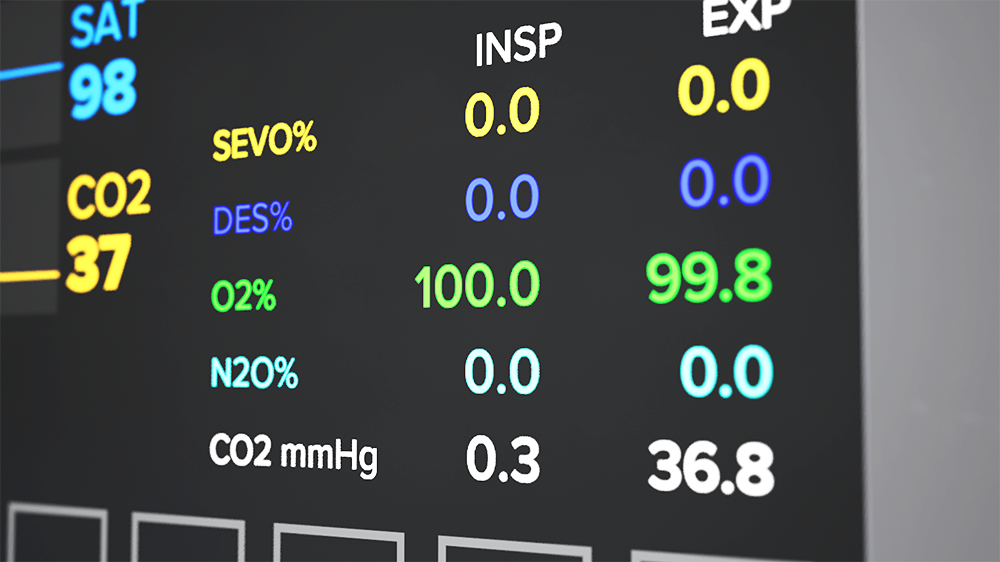
Uptake & Distribution
10 lessons
- Demonstrate an understanding of inspired concentration of an anesthetic and the factors affecting it.
- Demonstrate an understanding of alveolar concentration of an anesthetic.
- Demonstrate understanding of the relationship between FA and FI.
- Demonstrate understanding of the significance of the blood:gas partition coefficient.
- Demonstrate how to perform over pressurization.
- Demonstrate how alveolar ventilation affects the uptake and distribution of inhaled anesthetics.
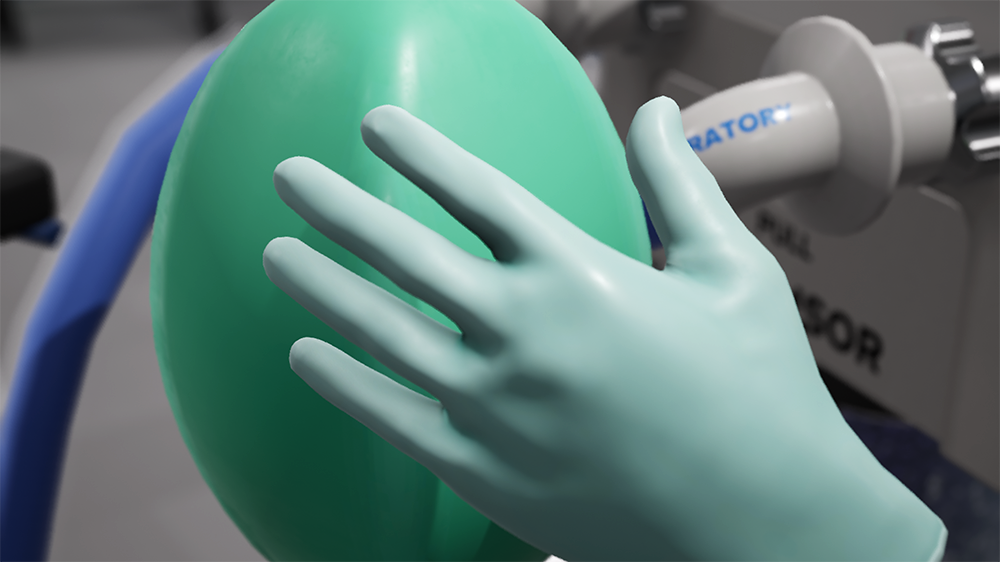
Manual Ventilation
5 lessons
- Demonstrate how to manually ventilate an intubated patient.
- Demonstrate how to manually ventilate a patient using the facemask.
- Demonstrate how to adjust the flowmeters and APL valve to deliver a sufficient tidal volume and respiratory rate.

Manually Assisted Ventilation
4 lessons
- Demonstrate how to use the breathing bag to manually assist the ventilation of an intubated, spontaneously breathing patient.
- Demonstrate how to manually assist the ventilation of a spontaneously breathing patient using the facemask.
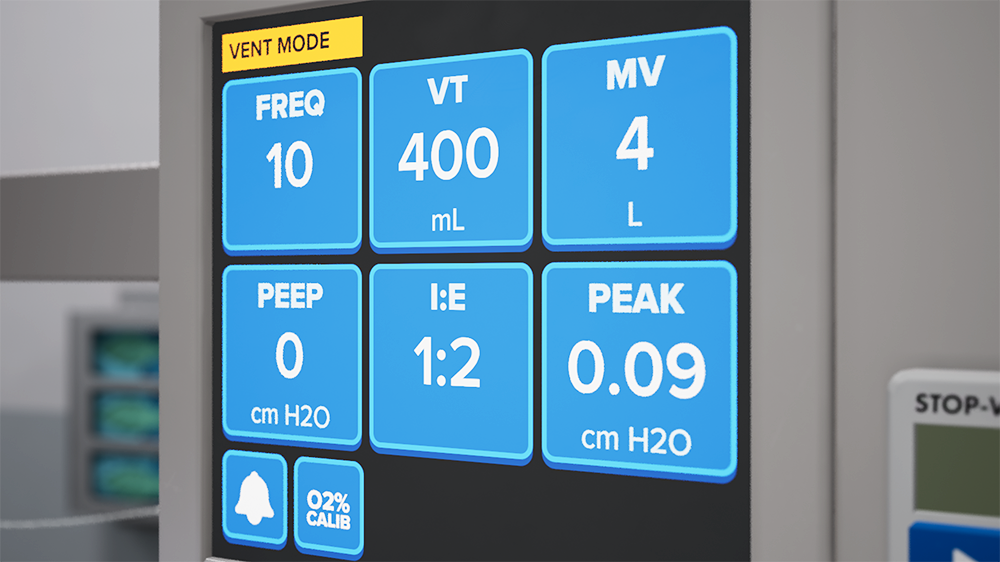
Volume Controlled Ventilation
5 lessons
- Demonstrate how to adjust the respiratory rate and tidal volume.
- Demonstrate an understanding of the I:E ratio.
- Demonstrate an understanding of PEEP and how to set it.
- Correctly set prescribed ventilation parameters.
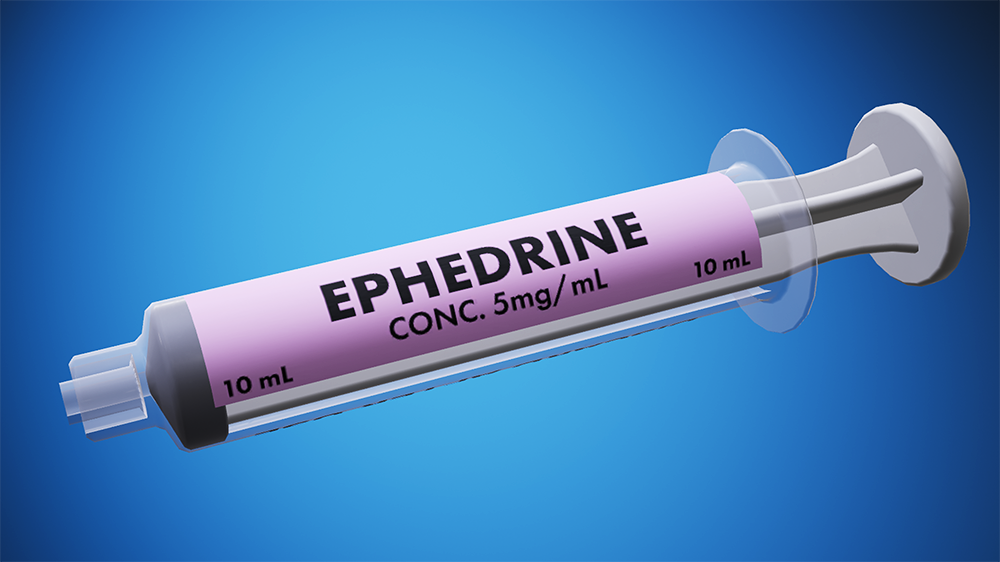
Ephedrine
2 lessons
- Correctly identify the indications for the use of ephedrine.
- Identify the mechanism of action of ephedrine.
- Select an appropriate initial dosing regimen for ephedrine.
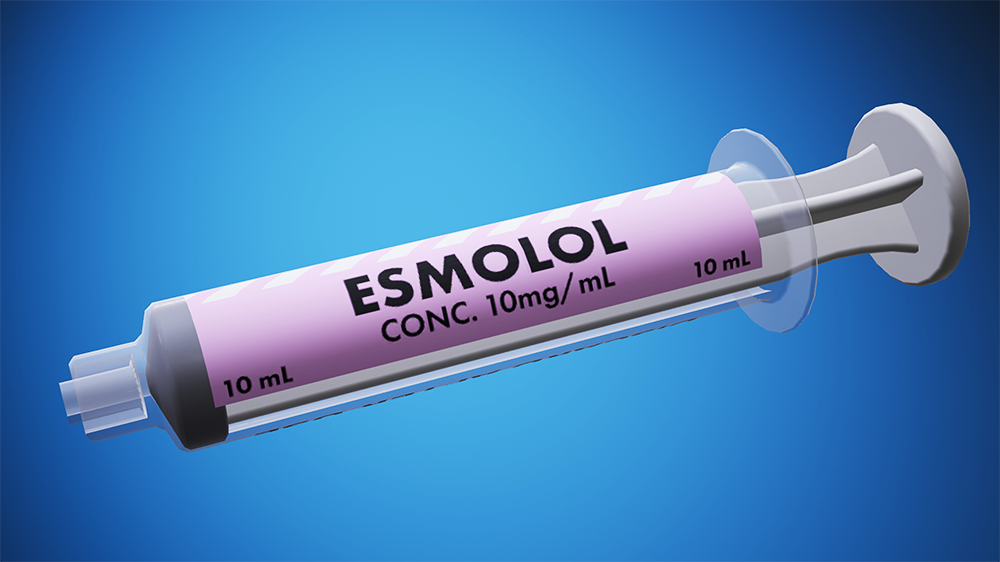
Esmolol
2 lessons
- Correctly identify the indications for the use of esmolol.
- Identify the mechanism of action of esmolol.
- Select an appropriate initial dosing regimen for esmolol.
- Independently correct a patient’s hemodynamic status using intravenous esmolol.
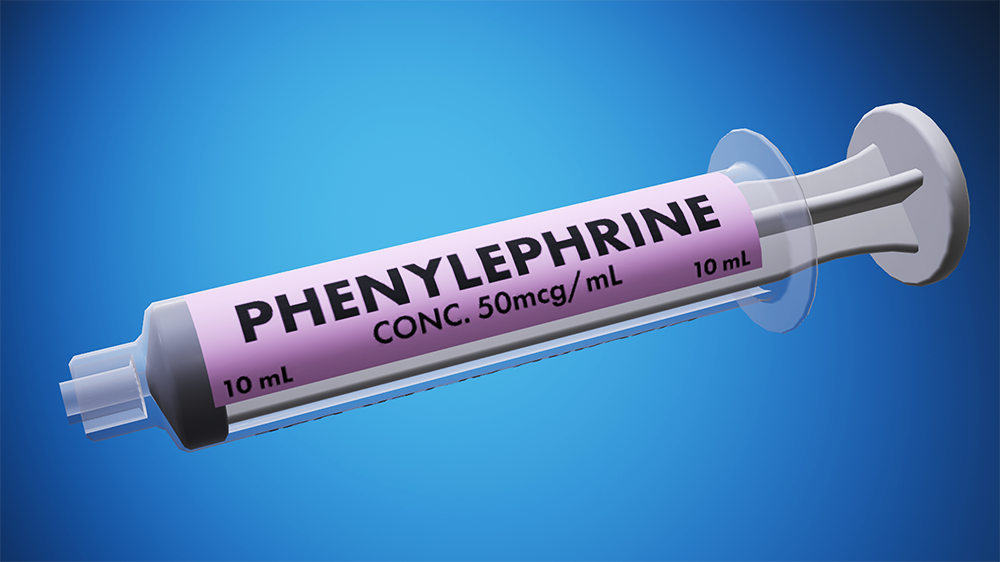
Phenylephrine
2 lessons
- Correctly identify the indications for the use of phenylephrine.
- Identify the mechanism of action of phenylephrine.
- Select an appropriate initial dosing regimen for phenylephrine.
- Independently utilize phenylephrine to correct a patient’s hemodynamic status.
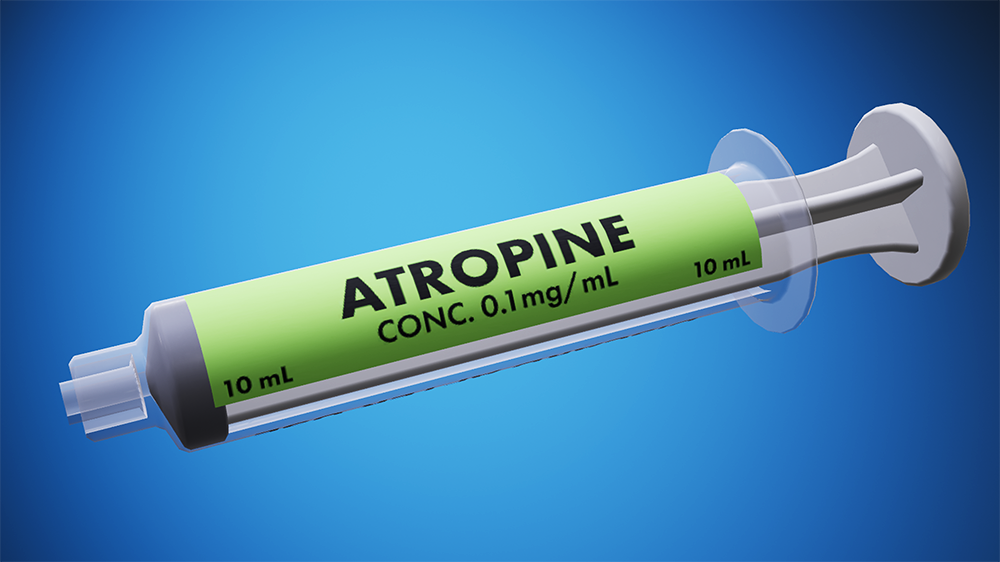
Atropine
2 lessons
- Identify the indications for atropine usage.
- Identify the appropriate dosage of atropine for severe bradycardia.
- Independently address severe bradycardia in a patient using intravenous atropine.
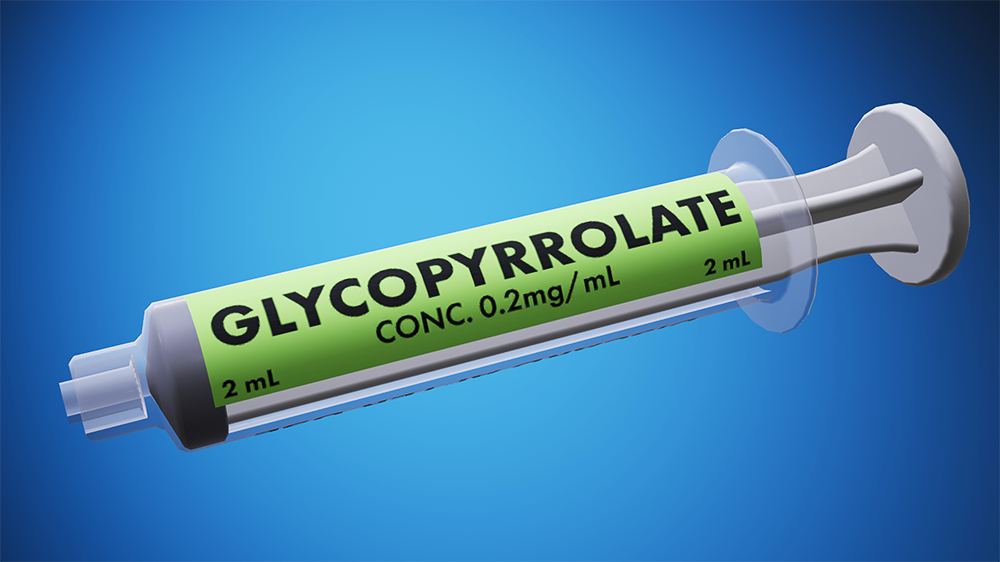
Glycopyrrolate
2 lessons
- Identify the indications, dose, and duration of action of glycopyrrolate.
- Identify the cardiac effects of glycopyrrolate.
- Demonstrate how to return a patient’s hemodynamic status back to baseline using intravenous glycopyrrolate.
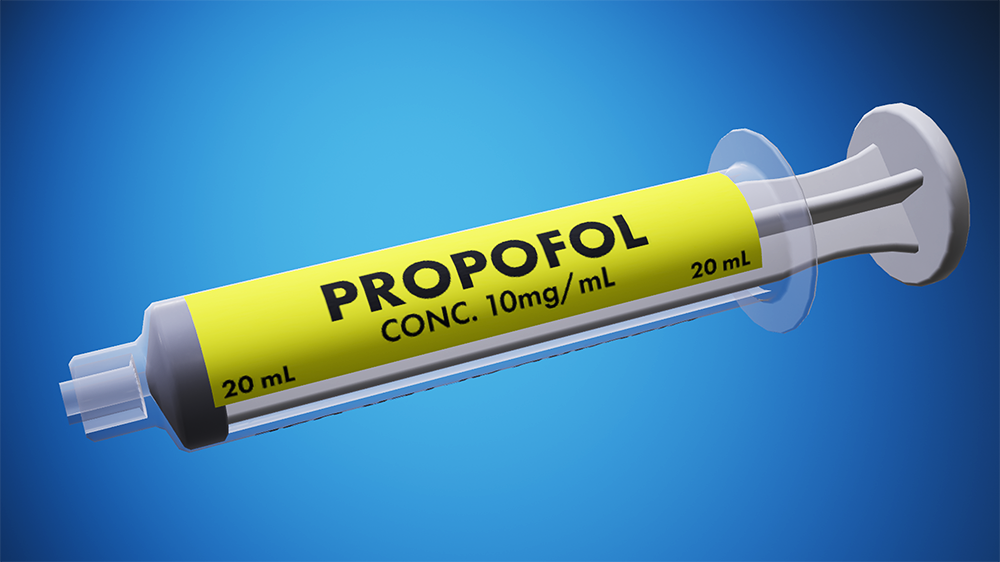
Propofol
5 lessons
- Mitigate the pain on injection associated with propofol
- Perform an intravenous induction using an appropriate dose of propofol
- Recognize and predict the effects of propofol on the cardiac and respiratory systems.
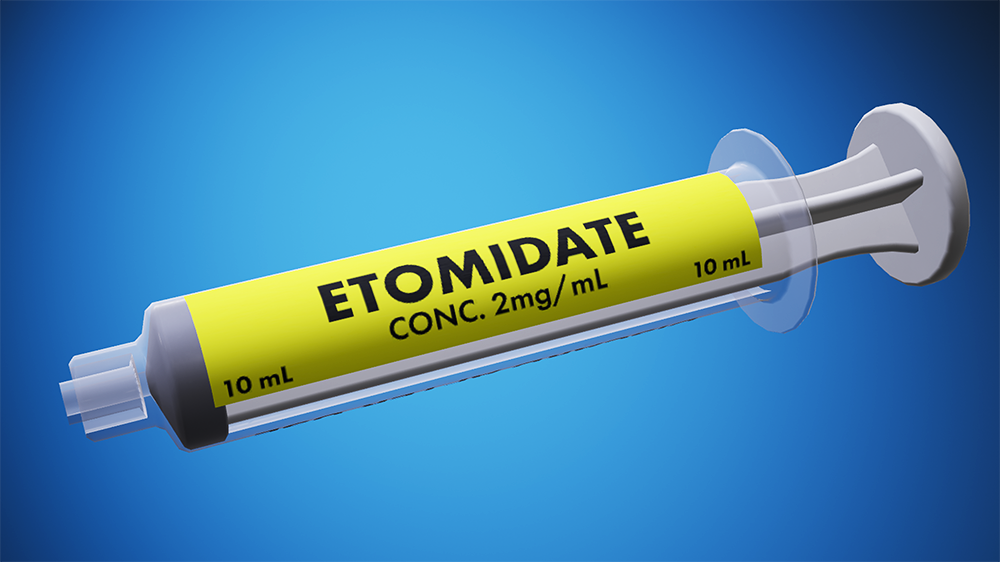
Etomidate
3 lessons
- Demonstrate the correct dosing regimen for an intravenous induction with etomidate.
- Recognize and predict the effects of etomidate on the cardiovascular and respiratory systems.

Ketamine
4 lessons
- Identify the indications and appropriate dosing for an intravenous ketamine induction.
- Identify the neurologic effects associated with ketamine administration.
- Recognize and predict the effects of ketamine on the cardiac and respiratory systems.
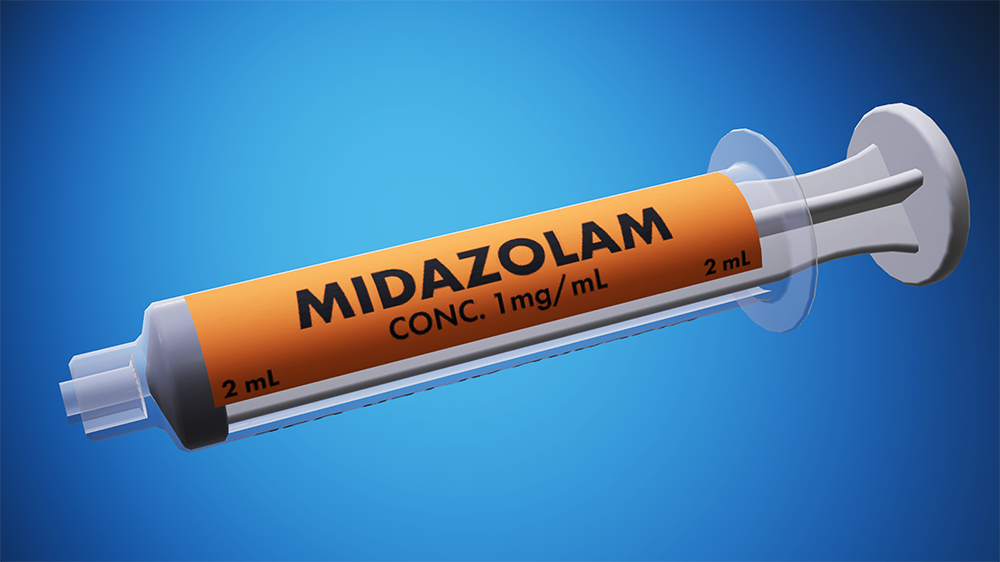
Midazolam
2 lessons
- Correctly identify the appropriate midazolam dose for preoperative anxiolysis.
- Recognize and predict the anxiolytic effects of midazolam administration.
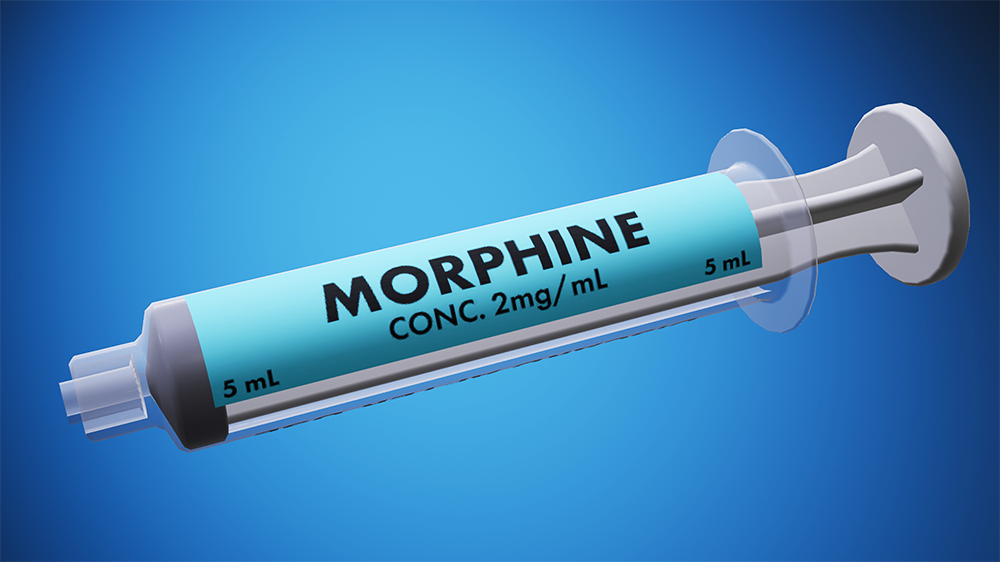
Morphine
2 lessons
- Correctly identify the indications and appropriate dose for morphine.
- Recognize and predict the analgesic effects of intravenous morphine administration.
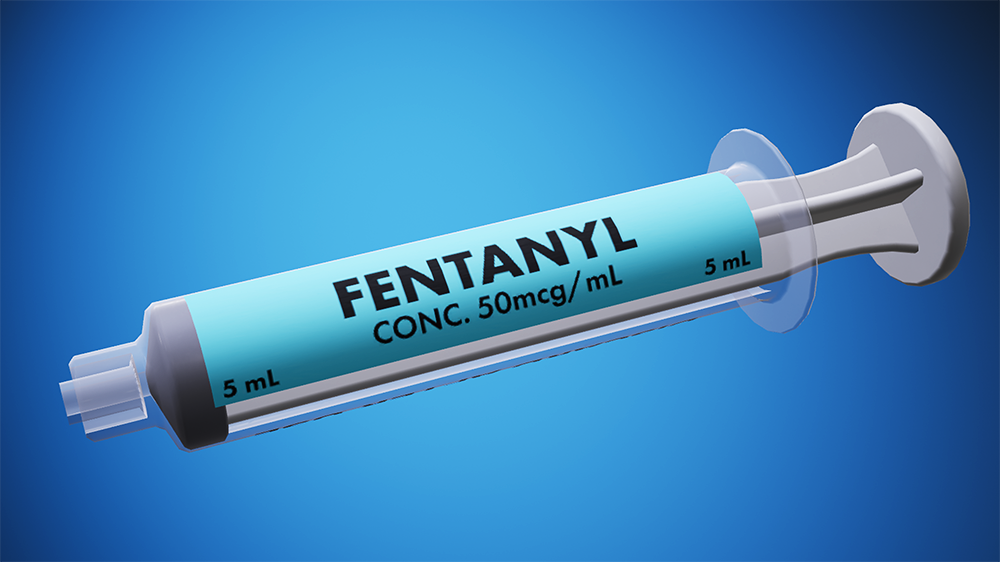
Fentanyl
2 lessons
- Correctly identify the indications and appropriate dose for intravenous fentanyl.
- Recognize and predict the analgesic effects of intravenous fentanyl administration.
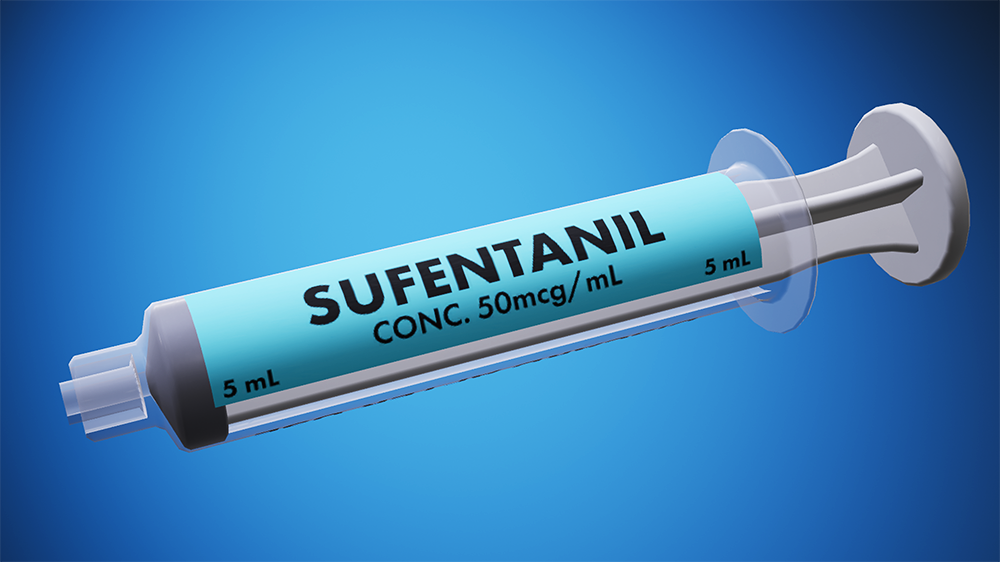
Sufentanil
2 lessons
- Correctly identify the indications and appropriate dose for intravenous sufentanil.
- Recognize and predict the analgesic effects of intravenous sufentanil administration.
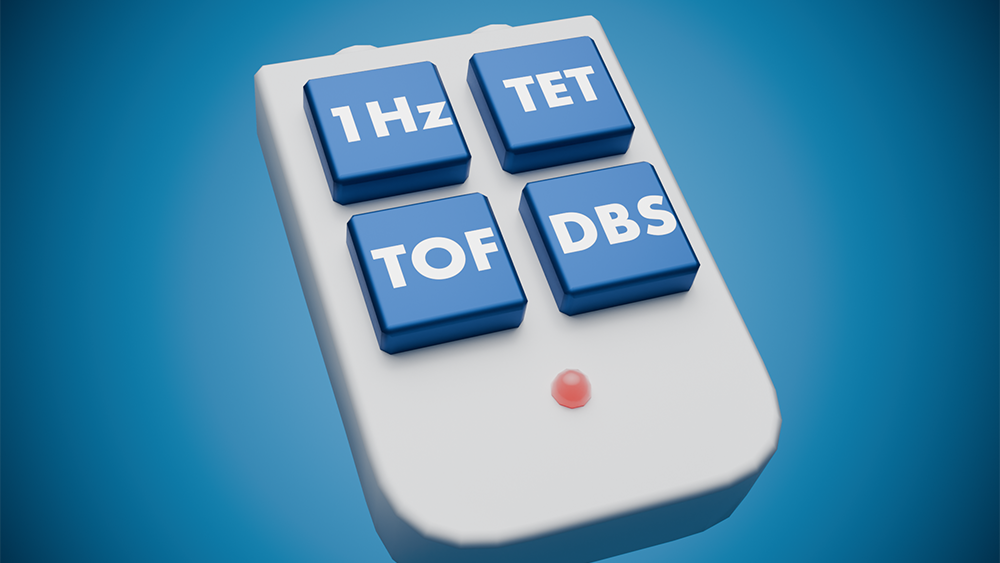
Peripheral Neuromuscular Stimulator
3 lessons
- Learn the four types of tests available in the SIMVANA Peripheral nerve stimulator.
- Learn how to connect the peripheral nerve stimulator to the two monitoring sites available in SIMVANA.
- Learn how to perform the single twitch test using the peripheral nerve stimulator.
- Learn how to perform the train of four test using the peripheral nerve stimulator.
- Learn how to perform the double burst stimulation test using the peripheral nerve stimulator.
- Learn how to perform the tetanic stimulation test using the peripheral nerve stimulator.
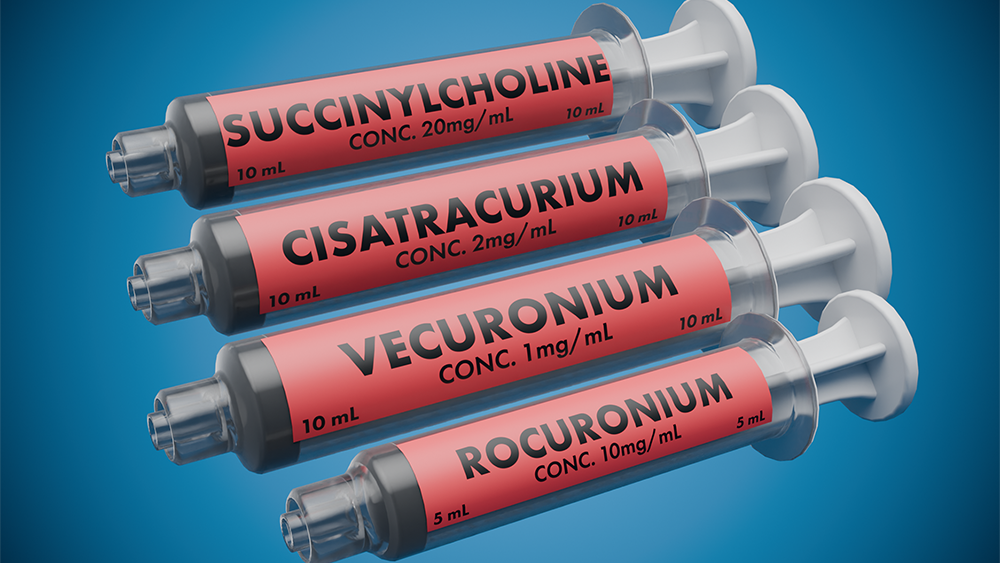
Neuromuscular Blocking Agents
6 lessons
- Learn the two different classes of neuromuscular blocking agents, their uses, and when to never use them.
- Learn about the characteristics of a depolarizing neuromuscular blockade and the only agent that produces it.
- Learn the appropriate dose, onset time, and duration of succinylcholine as well as its effect on a train-of-four test.
- Learn the special considerations that must be contemplated when administering succinylcholine.
- Learn the characteristics of nondepolarizing blocking agents, their dose, and the effect of rocuronium on the train of four.
- Learn the significance of defasciculation and myalgia when administering depolarizing neuromuscular blocking agents.
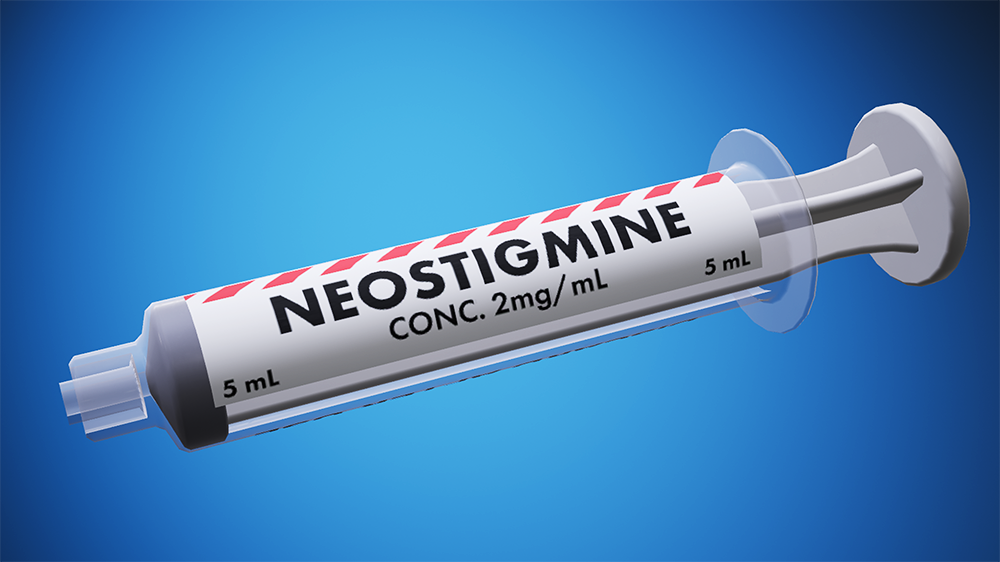
Reversal Agents
5 lessons
- Learn the two drugs commonly used to reverse nondepolarizing neuromuscular blockade.
- Learn the appropriate method of reversing nondepolarizing neuromuscular blockade using an anticholinesterase agent.
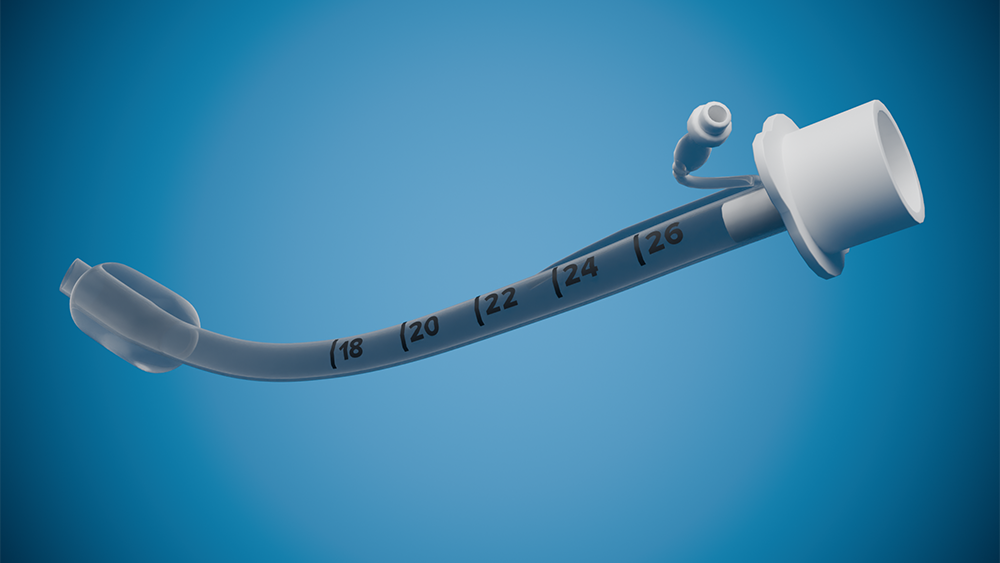
Endotracheal Intubation
2 lessons
- Demonstrate appropriate preparation of the patient for intravenous induction of anesthesia including preoxygenation and placement of monitors.
- Demonstrate the proper technique for intravenous induction for routine endotracheal intubation.
- Demonstrate the proper technique for rapid sequence intravenous induction for endotracheal intubation.
- Demonstrate verification of proper endotracheal tube placement by auscultation and evaluation of the ETCO2 waveform.
- Demonstrate maintenance of anesthesia using a volatile agent and establishment of mechanical ventilation.
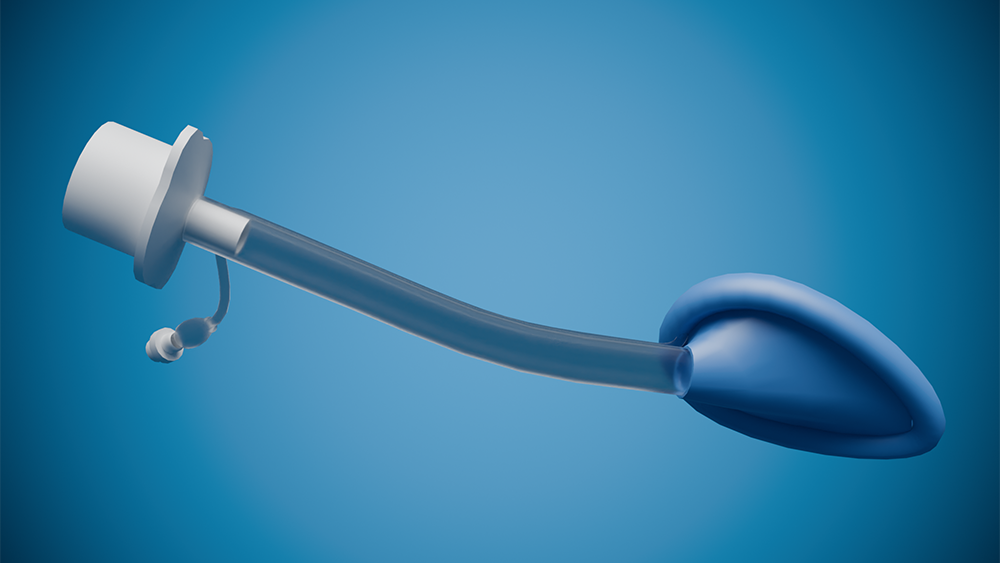
Supraglottic Airway Placement
1 lesson
- Demonstrate appropriate preparation of the patient for intravenous induction of anesthesia including preoxygenation and placement of monitors.
- Demonstrate the proper technique for intravenous induction for supraglottic airway placement for a situation in which you wish to restore spontaneous ventilation quickly.
- Demonstrate verification of proper SGA placement by auscultation and evaluation of the ETCO2 waveform.
- Demonstrate maintenance of anesthesia using a volatile agent and institution of manual ventilatory assistance as needed.

More to come...
We are always adding new learning content to SIMVANA. Check back regularly for updates!
In the meantime, checkout SIMVANA's simulations for more learning content!